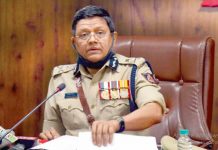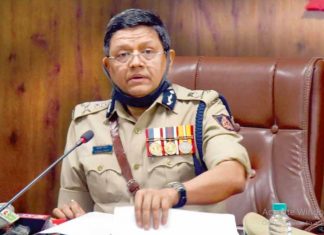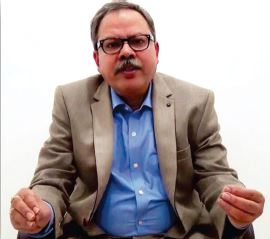 Far removed from police work, Karnataka cadre IPS officer M Nanjundaswami is on a historical quest. His researches have unearthed a treasure house of information regarding early Kings of Karu Nadu.
Far removed from police work, Karnataka cadre IPS officer M Nanjundaswami is on a historical quest. His researches have unearthed a treasure house of information regarding early Kings of Karu Nadu.
He has reason to believe that Chālukyas belonged to the Chalukya (agricultural Holeya) dynasty. They are named by different names like Chaluki, Saluki, Chalukya, Chalikya and Chalkya. “We can equate these words with salike; an instrument used to dig and lift up the soil, a pick axe, hoe. Salake; a iron rod, a kind of plow. The Hoysala kings derived their names from the word Sala; a kind of plow and Hoy; drive. So, Hoysala is somebody who drives a plow or tends a plow,” he says in a research paper. It proffers to give an etymological explanation to the genesis of the words Chalavadi, Chaluvadi, Chaluki, Chalukya and the names of the early Kings of the Karu Nadu.
 He submits that the honor and respect given to the Holeyas in some of the class one temples of Karnataka like ChaluvaNarayana temple in Melukote and ChennaKesava temple in Belur, even though limited for a few days and for some customary practices and celebrations during the annual festivals, appears to be of the kind accorded to royalty.
He submits that the honor and respect given to the Holeyas in some of the class one temples of Karnataka like ChaluvaNarayana temple in Melukote and ChennaKesava temple in Belur, even though limited for a few days and for some customary practices and celebrations during the annual festivals, appears to be of the kind accorded to royalty.
“The kind of respect showed and genuine honor bestowed upon the scion of erstwhile Maharaja of Mysore Kingdom during the annual festival of Dasara in Mysore city, is quite similar to the honor and reverence attached to the Holeya chiefs in almost all the temples of Karnataka where the village deity is worshiped and taken out in procession during the special puja and the annual offerings,” he has observed.
Following are excerpts fromhis research paper:
It would be difficult to prove that somebody other than a Holeya founded these practices sometime on his own in all the disconnected temples throughout the country, if those temples had not been constructed by the Holeyas and if those customs and practices had not been started by the Holeyas. The people who accepted and adopted the culture, language, religion, customs and practices of the Holeyas who were at the helm of the affairs of the state as the rulers, landowners and administers, looked down upon the Holeyas once they begun to lose the land, status in the society and personal wealth because of series of wars and excessive land grants to the non-agricultural communities that lived upon the sweat of brothers of the Holeyas and exploited them and paid nothing in return to the exchequers of the Holeya kings.
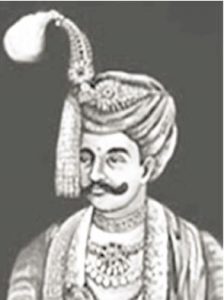 Those land grantees who waited for the arrival of the Holeyas to the temple were the same people who had the greatest other benefits of the free dole outs from the then land lords; Holeyas. The Holeyas slowly and steadily had begun avoiding the temples as they were unable to go to the temples with the vigor, glamour and grandeur with which they proceeded to the temples earlier and finally stopped going to the temples and gave away the administration of the temples too to the others as they were unable to continue the rituals that involved huge expenditure from their side. The custom of inviting them to the temple and honoring them had begun during the period of the administrative set up that has vanished but the custom of inviting the Holeyas to the temples is continuously practiced every year.
Those land grantees who waited for the arrival of the Holeyas to the temple were the same people who had the greatest other benefits of the free dole outs from the then land lords; Holeyas. The Holeyas slowly and steadily had begun avoiding the temples as they were unable to go to the temples with the vigor, glamour and grandeur with which they proceeded to the temples earlier and finally stopped going to the temples and gave away the administration of the temples too to the others as they were unable to continue the rituals that involved huge expenditure from their side. The custom of inviting them to the temple and honoring them had begun during the period of the administrative set up that has vanished but the custom of inviting the Holeyas to the temples is continuously practiced every year.
There is a custom in the BagalaKote town in northern Karnataka where by the erstwhile rulers of the area belonging to the Desai family go in a royal procession to the house of the Holeya chief in the quarter where all the Holeyas of the town live to receive the fire required to burn the Kama during the Holi festival. The scion of the Desai family offers fruits, silk clothes and money in a plate with respect and garlands the chief of the Holeyas who gives them fire and the chief would in turn honor the Desai too. I witnessed the ceremony in the years 2000 and 2001 in my capacity as the Assistant Superintendent of Police of the BagalaKote subdivision. Some elders of the family of the Holeyas tell that they were the rulers of the country (Nadu) and now they are called Chalavadis and earlier the people called them Chalukyas. We can agree these words of the Holeyas called Chalavadis (Chaluvadis) prove their claim with the help of several evidences.
Chalukyas Origin Traced to Pure Kannada Royal Family
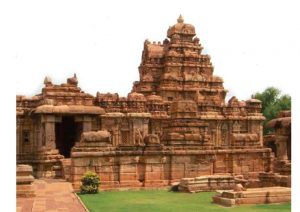 The Chalukyas belong to the pure Kannada royal family. Plenty of discussions have been conducted about their origin and their name. I have different stand in comparison to the stand taken by the historians. I don’t intend to add up to the long list of the etymological analysis done so far by plenty of scholars. There is a further scope to explain the meaning of the word Chalukya based on the linguistics, social, geographical and cultural backgrounds. There are some ancient forms of the word Chalukya in the Badami inscriptions: 578 AD, Mahakuta pillar inscription: 602 AD, Mangalesh’s inscription: 7th century and Aihole inscription of Pulakesi II : 634 AD.
The Chalukyas belong to the pure Kannada royal family. Plenty of discussions have been conducted about their origin and their name. I have different stand in comparison to the stand taken by the historians. I don’t intend to add up to the long list of the etymological analysis done so far by plenty of scholars. There is a further scope to explain the meaning of the word Chalukya based on the linguistics, social, geographical and cultural backgrounds. There are some ancient forms of the word Chalukya in the Badami inscriptions: 578 AD, Mahakuta pillar inscription: 602 AD, Mangalesh’s inscription: 7th century and Aihole inscription of Pulakesi II : 634 AD.
Ancestors of Chalukyas Were Children of Soil
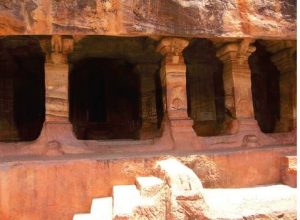 An overall observation of these words would reveal that the words Javalu, Chaliya and Chavulu have originated from a single root. All these words are related to the soil. We can consider that the salike, salake and chalukya-saluki are cognates. The ancestors of the Chalukyas were the children of the soil, they were the agricultural plowmen; Holeyas. They earned the fiefdom and grew up to become the royal family of the Nadu; country. The important name of the dynasty, Polakesin, helps us in deciding the family as an agricultural family.
An overall observation of these words would reveal that the words Javalu, Chaliya and Chavulu have originated from a single root. All these words are related to the soil. We can consider that the salike, salake and chalukya-saluki are cognates. The ancestors of the Chalukyas were the children of the soil, they were the agricultural plowmen; Holeyas. They earned the fiefdom and grew up to become the royal family of the Nadu; country. The important name of the dynasty, Polakesin, helps us in deciding the family as an agricultural family.
Kannada Inscriptions Mention Names Similar to Polakesin
There are a plenty of inscriptions in Kannada that mention men and women with names similar to Pōlakēsin (one who tends or manages land; Holeya).
Chālukyas belonged to the Chalukya (agricultural Holeya) dynasty. They are named by different names like Chaluki, Saluki, Chalukya, Chalikya and Chalkya. We can equate these words with salike; an instrument used to dig and lift up the soil, a pick axe, hoe. Salake; a iron rod, a kind of plow. The Hoysala kings derived their names from the word Sala; a kind of plow and Hoy; drive. So, Hoysala is somebody who drives a plow or tends a plow.
The words chaluki-saluki denotes soil, mud. They are Dravidian words and have cognate words in almost all the Dravidian languages. It is wrong to derive these words from Sanskrit; the Dravidian form has been adopted by the Sanskrit. The word Pōlakēsin is also an agricultural term. It denotes owner of the land, one who tends land.
 Chalukyas were agriculturalists from the Badami-Shirahatti areas of the northern Karnataka. The Polaveeras (the plowmen, landlords, Holeyas) of this family strengthened themselves to build up a dynasty that swayed over a large track of the land and founded the strong kingdom. The Rashtrakuta kings too were agriculturists, it is proved beyond doubt by the emblem that they had. It was a well designed plow used throughout India. It seems the Ganga Dynasty was also founded by an agricultural family.
Chalukyas were agriculturalists from the Badami-Shirahatti areas of the northern Karnataka. The Polaveeras (the plowmen, landlords, Holeyas) of this family strengthened themselves to build up a dynasty that swayed over a large track of the land and founded the strong kingdom. The Rashtrakuta kings too were agriculturists, it is proved beyond doubt by the emblem that they had. It was a well designed plow used throughout India. It seems the Ganga Dynasty was also founded by an agricultural family.
The knowledgeable historian shave to consider the natural derivation of the word Chalukya from the agricultural term that is closer to the reality and human beings rather than from the imaginary divine genesis of the dynasty. The Pōlagere seems to be the original place of the Chalukyas. They have copiously donated to the Sankha Basadi in the town. The Chalukyas of Kalyani and Chalukyas of Badami have repaired the Basadi again and again and granted copiously for the up keep of the Jain Monastery.
The descendants of the Chalukyas are called Chalavadis. The caste of the rich men in India becomes the upper caste and the caste of those who lose power and position becomes the lower caste. This is happening for a quite some time regularly and invariably.

